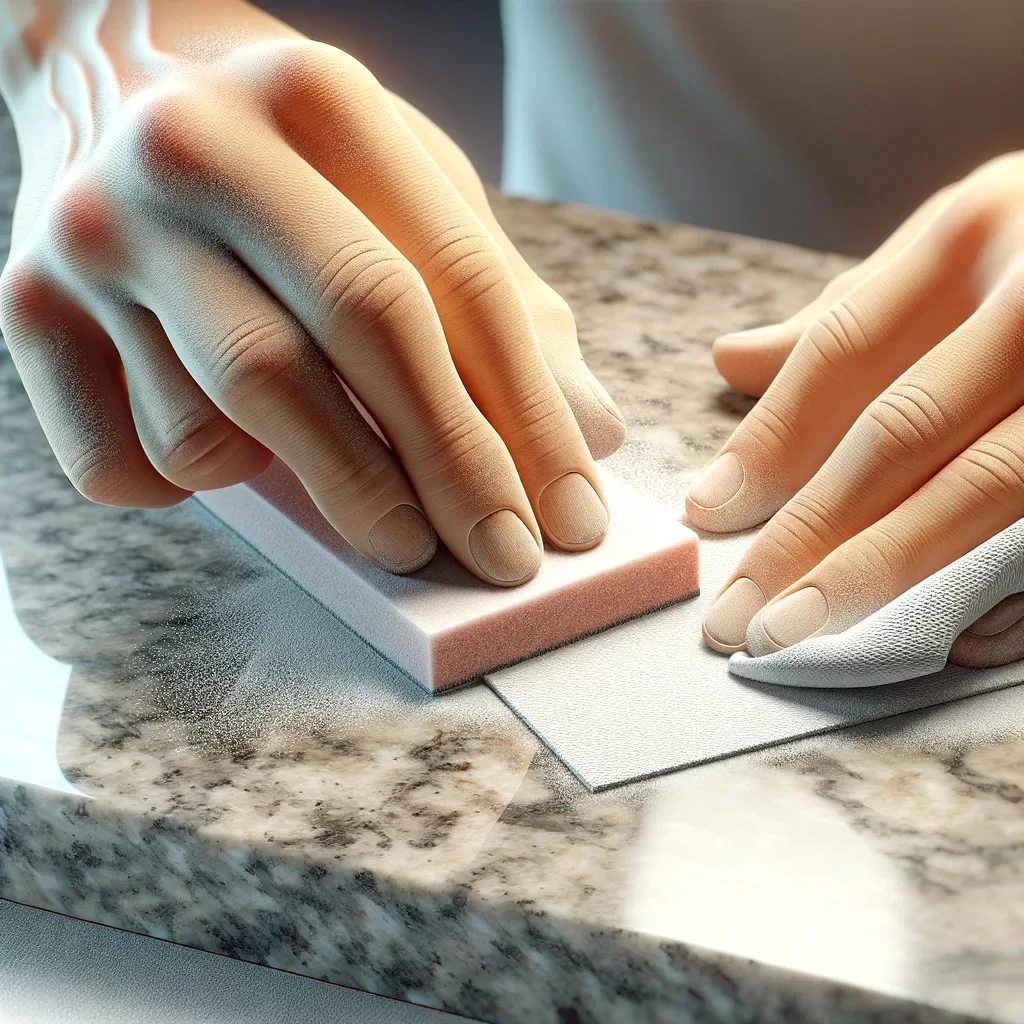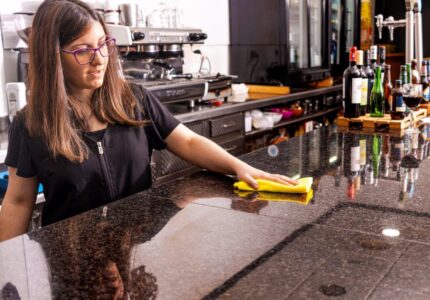Granite countertops are renowned for their durability, but they’re not invincible. Several factors can lead to cracks or damage, requiring granite countertop repair. One common cause is excessive weight. Placing heavy objects, like large kitchen appliances or standing on the countertop to reach high cabinets, can exert undue stress, resulting in cracks. Temperature fluctuations also play a role; sudden changes in temperature, such as placing a hot pan directly onto the granite, can cause thermal shock, leading to cracks. Additionally, improper installation or a lack of support for overhanging sections can make the countertop more susceptible to cracking.
Can cracked granite be repaired?
Yes, cracked granite can be repaired, depending on the extent and location of the crack. Here are some common methods used to repair cracked granite:
- Epoxy resin filling: This method involves injecting an epoxy resin into the crack to fill and seal it. The resin is often colored to match the granite’s natural hue, ensuring a seamless repair. Once the epoxy cures, it hardens and provides structural support, preventing further damage.
- Granite dust and resin mixture: In this method, granite dust is mixed with epoxy resin to create a paste that is applied to the crack. This mixture closely matches the color and texture of the surrounding granite, making the repair less noticeable. Once cured, the paste forms a durable bond with the granite, effectively repairing the crack.
- Reinforcement with fiberglass or carbon fiber strips: For larger or more severe cracks, fiberglass or carbon fiber strips may be used to reinforce the granite and prevent the crack from spreading. These strips are bonded to the surface of the granite using epoxy resin, providing added strength and stability.
- Professional repair services: In some cases, especially for complex or extensive damage, it may be best to seek the services of a professional stone restoration specialist. These experts have the skills, tools, and materials needed to assess the damage and perform high-quality repairs that restore the granite’s appearance and structural integrity.
It’s important to address cracked granite promptly to prevent further damage and ensure a successful repair. Additionally, proper care and maintenance, such as avoiding heavy impacts and using cutting boards and trivets to protect the surface, can help prevent future cracks and prolong the life of your granite countertops or surfaces.
Materials and Tools Needed:
- Epoxy Resin Kit: Specifically designed for granite or stone repair.
- Razor Blade: For removing excess epoxy.
- Acetone or Alcohol: For cleaning the area.
- Painters Tape: To protect surrounding areas.
- Mixing Stick and Mixing Board: For preparing the epoxy.
- Putty Knife: For applying epoxy.
- Fine-Grit Sandpaper: For smoothing the repaired area.
- Gloves and Safety Glasses: For personal protection.
- Color Pigment (optional): To match the color of your granite.
Steps to repair countertop crack:
- Clean the Area:
- Use acetone or alcohol to clean the cracked area thoroughly.
- Ensure it’s completely dry before proceeding.
- Prepare the Area:
- Apply painters tape around the crack to protect the surrounding area of the granite.
- Mix the Epoxy:
- Follow the instructions in the epoxy resin kit.
- If needed, add color pigment to match your countertop.
- Mix thoroughly with the mixing stick on the mixing board.
- Apply Epoxy to the Crack:
- Using the putty knife, carefully fill the crack with the mixed epoxy.
- Ensure it’s slightly overfilled to account for shrinkage as it dries.
- Allow Epoxy to Cure:
- Refer to the epoxy kit for the recommended curing time.
- Avoid using the countertop during this period.
- Remove Excess Epoxy:
- Once cured, use a razor blade to scrape off any excess epoxy, leveling it with the countertop surface.
- Sand the Repaired Area:
- Gently sand the repaired area with fine-grit sandpaper to smooth it out.
- Be careful not to scratch the surrounding granite.
- Clean Up:
- Remove the painters tape and clean the area again to remove any epoxy or dust residues.

Important Considerations:
- Safety: Always wear gloves and safety glasses when handling epoxy and chemicals.
- Color Matching: Take time to match the epoxy color to your granite for a seamless repair.
- Avoiding Further Damage: Do not apply excessive pressure while sanding as it might cause further damage.
Impact on Stability and Integrity:
- A properly done repair should not compromise the stability or integrity of the countertop.
- However, if the crack is significant or near areas of high stress (like around the sink), it’s advisable to consult a professional.
Preventing Crack Expansion:
- Avoid placing heavy objects near the repaired area.
- Regularly check and maintain the sealant on your granite to prevent water penetration and further cracking.
Caring for Seams Post-Repair
After performing granite countertop repair, it’s crucial to care for the seams to prevent staining or further damage. First and foremost, ensure the repaired area is thoroughly sealed. Using a high-quality sealer specifically designed for granite will protect the seam from water penetration and stains. It’s important to reapply the sealer periodically, following the manufacturer’s recommendations. Additionally, avoid placing heavy objects near the repaired seam and use cutting boards, trivets, and coasters to minimize direct contact with potentially damaging items. Regular cleaning with a soft cloth and a pH-neutral cleaner will also help maintain the integrity of the repair. Avoid harsh chemicals or abrasive cleaners, as these can degrade the sealer and harm the granite.
These steps will help ensure your granite countertop remains beautiful and functional for years to come. Remember, granite countertop repair, when done correctly, can restore the beauty and functionality of your countertop without compromising its integrity.







